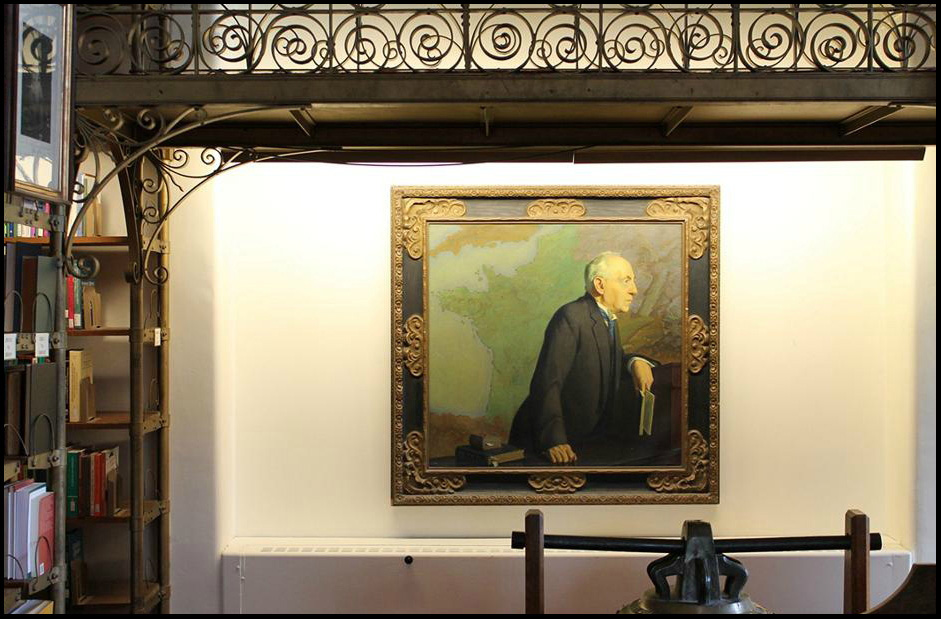A.D. White Library's beauty timeless, but not effortless
By Melanie Lefkowitz

Behind the scenes at the historic A.D. White Library, Cornell conservators have been working to ensure not only that the library looks its best but that its valuable artwork is preserved.
Staff from the library’s Department of Digitization and Conservation Services, with help from librarians and members of the facilities team, recently treated 22 works of art hanging in A.D. White Library. In some cases, the originals were deemed too valuable or fragile to continue displaying and were replaced with digital facsimiles; in others, the works were preserved, matted and framed in keeping with archival standards, and rehung in spots with less sunlight and behind UV-filtering glazing for additional protection.
With improved lighting on the way, thanks to the library’s successful fall 2015 crowdfunding campaign, conservators wanted to make sure A.D. White Library was ready for its close-up. They also wanted to keep its artwork, including prints, photographs and paintings, as safe as possible.
“For years there has been concern that historic, important library materials were displayed for extended periods in a bright, open, public space, so this was a good impetus for us to examine the artwork and switch to facsimiles or stabilize the originals,” said conservator Michele Hamill. “This is an iconic space, and we want to be sure we’re taking care of it.”
For example, an early, historic photograph of Ezra Cornell was transferred to the University Archives in the Division of Rare and Manuscript Collections (RMC), and a copy was placed in the original, ornate wooden frame. Facsimiles, created by media associate Rhea Garen, were designed as faithfully to the original as possible.
“If you saw them side by side, you would not know which one was the copy,” Hamill said. “The intention with using facsimiles is still to convey the essence of the space to the visitor, while safeguarding the original.”
In addition to being preserved, the artworks’ physical security was improved. This was challenging because the original, ornate metal bookshelves in A.D. White Library can’t be drilled, but facilities staff devised a technique to fasten them securely to the shelves without damaging them.
Conservators also cleaned two paintings, including one of George L. Burr, White’s personal librarian. The Burr portrait had grown very dusty, largely because it hung over a heating vent, but a protective hood has been added to the vent to blow the air away from the painting. Two other paintings requiring cleaning are too heavy to move without difficulty. Conservators will clean them using a mechanical lift.

A.D. White’s historic plaster cast collection, long stored in wooden chests near the library’s entrance, were cleaned and moved to storage in RMC. There, the casts will not only be better protected but more accessible to researchers, since they’re now organized and can be requested and individually viewed. The chests will be relocated to make way for more seating.
In planning the recent conservation work, library employees studied old photographs of the A.D. White Library to try to determine how it has been decorated over time. They found a number of changes over the years – including long-gone “No Smoking” signs – though the current displays have been in place for more than four decades.
“There’s a Cornell connection behind every one of these artworks and artifacts in the A.D. White Library,” Hamill said. “They tell a fascinating story about the early days of Cornell and the people who helped shape our university.”
Melanie Lefkowitz is a staff writer and editor at Cornell University Library.
Media Contact
Get Cornell news delivered right to your inbox.
Subscribe